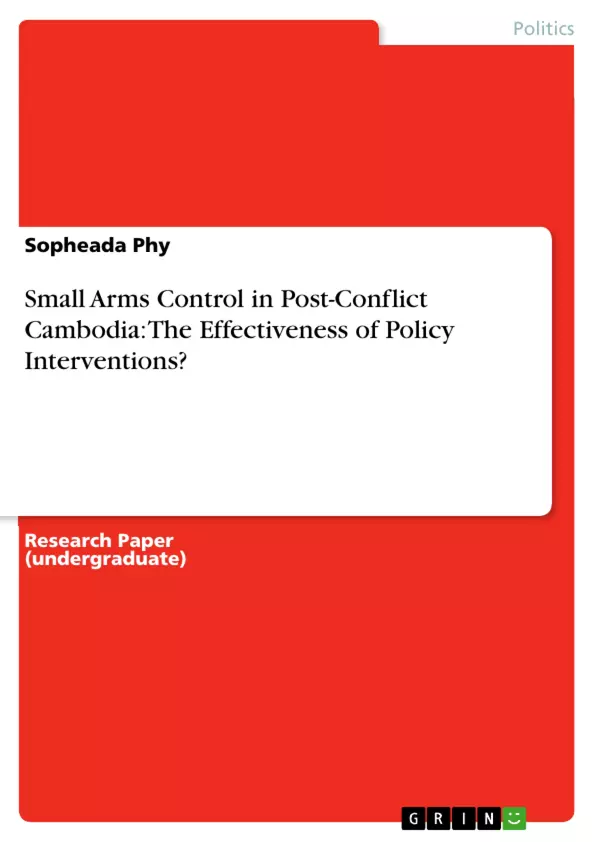Cambodia has been on its peace building effort for the sake of peace and prosperity right after emerging from the brutal violent conflict in 1991 when Paris Peace Accord was signed to end the conflict in the country. However, many challenges have been impairing this effort; not to mention the others, the proliferation of small arms such as assault rifles, grenades and pistols, has been threatening the security of the people. These small arms have been proliferating in post-conflict Cambodia as a consequence of conflict erupted in the late 1960s when the Vietnam War spilled over Cambodia. They have been instigating crime, violence and social disorder, which are the signal of future destabilization. Realizing these consequences, the government of Cambodia together with civil society, donor countries, and other stakeholders undertook a series of activities to control small arms proliferation, particularly the passing and putting into practice of the Law on the Management of Weapons, Explosives and Ammunition in 2005. Even though many efforts have been carried out, there seems no positive impact on the society as crimes, political violence, and other human rights violations still exist.
Inhaltsverzeichnis (Table of Contents)
- Small Arms Situation in Post-Conflict Cambodia
- Small Arms Control Efforts and Policy Interventions
- The Effectiveness of Small Arms Control: An Analysis
Zielsetzung und Themenschwerpunkte (Objectives and Key Themes)
This paper examines the effectiveness of small arms control efforts in post-conflict Cambodia. It explores the historical context of small arms proliferation, details policy interventions implemented by the Cambodian government and international partners, and analyzes the impact of these efforts on reducing crime and violence.
- The legacy of small arms proliferation in Cambodia stemming from the Vietnam War.
- The challenges posed by illegal weapons circulation and their contribution to crime and violence.
- The role of the Cambodian government and international donors in implementing small arms control measures.
- The effectiveness of policy interventions in reducing small arms proliferation and their long-term impact on Cambodian society.
- The complexities of addressing small arms control in a post-conflict environment.
Zusammenfassung der Kapitel (Chapter Summaries)
The paper begins by outlining the origins of small arms proliferation in post-conflict Cambodia, tracing the issue back to the Vietnam War and its impact on the country. It highlights the prevalence of illegal arms, their contribution to crime and violence, and the lack of public trust in security forces. The paper then details efforts undertaken by the Cambodian government and international partners to address the problem. These include weapon collection programs, policy interventions, and the passage of the Law on the Management of Weapons, Explosives and Ammunition. The paper concludes by analyzing the effectiveness of these efforts, acknowledging both successes and shortcomings in the face of ongoing challenges.
Schlüsselwörter (Keywords)
Small arms control, post-conflict Cambodia, weapons proliferation, policy interventions, crime, violence, human rights violations, government efforts, international cooperation, effectiveness, challenges.
- Quote paper
- Sopheada Phy (Author), 2009, Small Arms Control in Post-Conflict Cambodia: The Effectiveness of Policy Interventions?, Munich, GRIN Verlag, https://www.grin.com/document/149617



